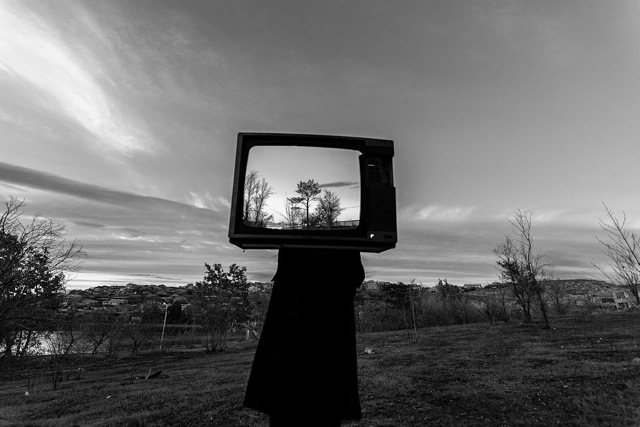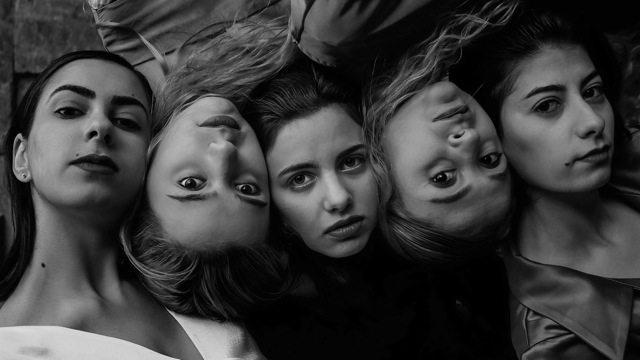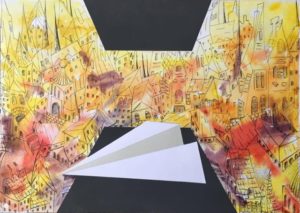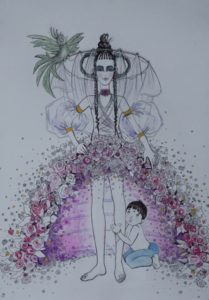‘I think that being an artist in Armenia is the same thing as everywhere, because artists are driven by a feeling and knowledge that helps them visualize what they feel, which does not depend on the country where they live because wherever they are living they are still going to create.’
– Aram Kirakosyan, Photographer from Yerevan
During its inaugural year, Armenia Art Fair will present Millennial Spotlight, a platform that will present young and emerging artists aged 25 years and under to an international audience. This section of the fair aims to show the world that up-and-coming creatives from the region are just as talented and innovative as those found anywhere else. We spoke to a couple of young artists based in Armenia about their experiences as photographers and designers in the country.
 While London has Central Saint Martins, Paris Ecole des Beaux Arts and New York Parsons School of Design, Armenia has TUMO and the State Academy of Fine Arts. And, while Yerevan may not have as many galleries as say Berlin or Rome, it does have a supportive art community. ‘The modern young artists here are very communicative’, says Armine Harutyunyan, an artist and designer from Yerevan, ‘we have a fascinating and versatile youth. There are numerous children’s art schools in the country.’ Those art schools provide education to the youth; some are even free, with TUMO Centre for Creative Technologies merging art and technology to provide the skills and expertise needed for entry into the digital and creative industries to teens living across Armenia in four locations.
While London has Central Saint Martins, Paris Ecole des Beaux Arts and New York Parsons School of Design, Armenia has TUMO and the State Academy of Fine Arts. And, while Yerevan may not have as many galleries as say Berlin or Rome, it does have a supportive art community. ‘The modern young artists here are very communicative’, says Armine Harutyunyan, an artist and designer from Yerevan, ‘we have a fascinating and versatile youth. There are numerous children’s art schools in the country.’ Those art schools provide education to the youth; some are even free, with TUMO Centre for Creative Technologies merging art and technology to provide the skills and expertise needed for entry into the digital and creative industries to teens living across Armenia in four locations.
While Armenia is steeped in history, it is providing the youth with opportunities to experiment with modern and new art trends. It is also communicating with the world: ‘Armenia is a country with a rich culture and traditions. The young artists are lucky to live in a place with such a great cultural heritage’, says Harutyunyan, who is quick to add that, artists: ‘actively seek new ideas, participating in exhibitions both in Armenia and abroad.’ In our technological world, artists in Armenia need not consider themselves any different from similarly aged creatives on opposite sides of the globe. ‘Being an artist in Armenia is the same thing as everywhere’, explains Yerevan-based photographer Aram Kirakosyan who adds that ‘artists are driven by a feeling…which does not depend on the country where they live, because wherever they are living they are still going to create.’ That said, he admits that there is still work to be done in his homeland: ‘Perhaps in Armenia it is more difficult to practice art than in European countries, because the art is not financed enough, there are not enough galleries.’ Despite this, he realizes that maybe he is in a more fortunate position than artists residing elsewhere: ‘At the same time maybe in Armenia it’s much easier to practice art than for example in Sudan, so it’s not so bad.’

Armenia provides support for artists and photographers in the form of a number of unions where creatives of all ages unite to work and exhibit together. Harutyunyan explained to me how art is often staged in unique and innovative ways: ‘when studying in art college my friends and I went to various shows and exhibitions. I began travelling to see art performances staged by theater students in small temporary scenes, galleries, cafes, even in the subway. Of course, there were real theatrical scenes as well. I was also lucky to see performances and exhibitions staged by young artists, designers, musicians and photographers.’ It would seem therefore, that the artistic atmosphere in Armenia is no different from anywhere else.
It is worth mentioning too, that in Armenia, just as anywhere else, it is up to the artists to decide whether they want to engage with each other and work together to organize exhibitions or not. Kirakosyan is not a member of any of Armenia’s unions, but he doesn’t want to be. With social media outlets like Instagram where everything is visual and individuals from all over the world are presented more or less on an equal footing, it is not so necessary nowadays to be in constant dialogue with our direct neighbors. Kirakosyan explains that: ‘In our time so many people are engaged in art and so many people have started to understand and determine what art is, that every beautiful picture is considered as art.’ And while there are those who don’t feel the need to validate their work through exhibition, hopefully at Armenia Art Fair, the organizers will be successful in providing this opportunity to young artists from the region to display their work, something that they might struggle to do anywhere else so early on in their careers.





